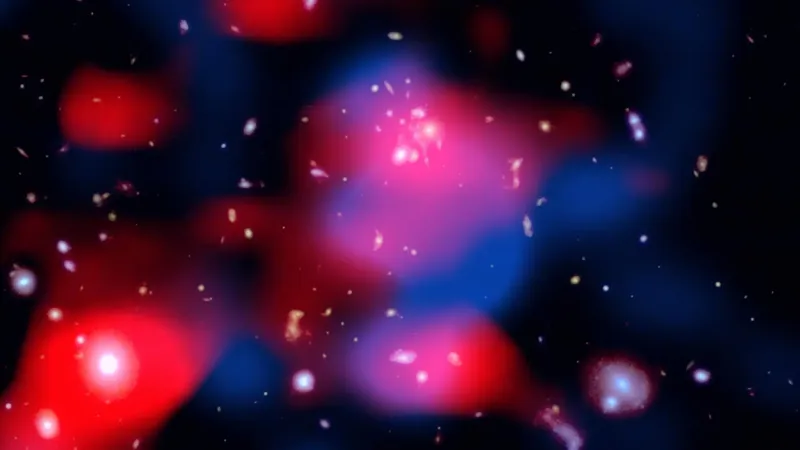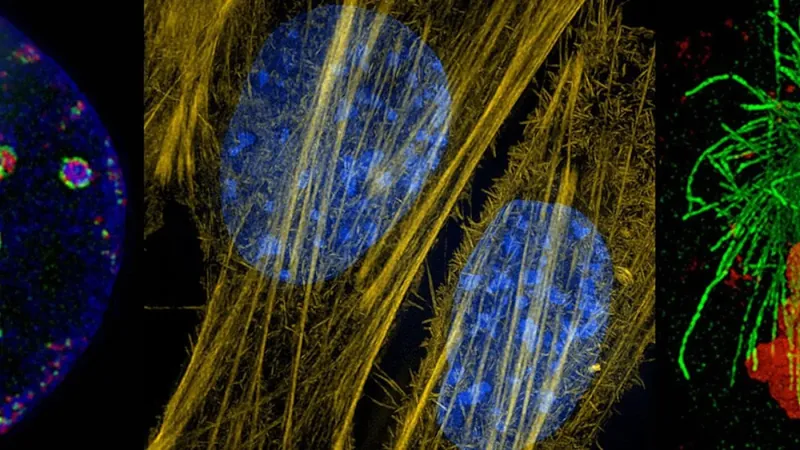
A Dazzling Discovery: A 10-Billion-Year-Old Radio Halo That Changes Everything!
2025-06-28
Author: Sarah
Astronomers Unveil a New Cosmic Marvel
In an astonishing breakthrough, scientists have identified the most distant radio halo ever discovered, with light taking an incredible 10 billion years to reach Earth. This groundbreaking find not only doubles the previous record distance but also transforms our understanding of the universe's history.
What Is a Mini-Halo?
This remarkable mini-halo consists of energized charged particles thriving in the vast emptiness between galaxies within a cluster. Together, they emit radio waves that astronomers can capture, offering valuable insights into the universe's structure.
Implications for Galaxy Clusters
Expected to be published in The Astrophysical Journal Letters, this research illustrates that galaxy clusters, some of the universe's grandest structures, have been surrounded by high-energy phenomena for much longer than previously realized.
The Power Behind the Halo
The research team, led by Julie Hlavacek-Larrondo from Université de Montréal and Roland Timmerman from the Institute for Computational Cosmology at Durham University, analyzed data from the Low Frequency Array (LOFAR) telescope—a network of over 100,000 antennas spanning eight countries in Europe. During their study of a galaxy cluster known as SpARCS1049, they detected a faint yet extensive radio signal that signified the presence of energetic particles filling the region.
A Cosmic Ocean Awaiting Exploration
"It feels like we've discovered a vast cosmic ocean, where entire galaxy clusters are submerged in high-energy particles," stated Hlavacek-Larrondo. Timmerman added, "Finding such a robust radio signal at this distance is remarkable. It indicates that energetic particles have influenced galaxy clusters throughout most of the universe's history."
Understanding Mini-Halo Formation
Two primary theories explain the formation of this mini-halo. First, supermassive black holes at the center of galaxies might eject streams of high-energy particles into space. However, how these particles retain energy while expanding into such a large cloud is still a mystery. Alternatively, cosmic particle collisions could create high-energy particles when charged particles within the hot plasma of galaxy clusters collide at near-light speeds.
A Glimpse into the Early Universe
This newfound radio halo affords astronomers a rare glimpse into galaxy clusters just after their formation. It reveals that clusters have been bathed in high-energy particles for a much longer duration than previously believed, enriching our understanding of their evolution.
The Future of Cosmic Exploration
With advanced telescopes like the Square Kilometer Array (SKA) on the horizon, scientists are poised to detect even fainter signals and delve further into the mysteries of magnetic fields, cosmic rays, and energetic processes at work in the universe. "We're just beginning to scratch the surface of the early universe's energy dynamics," Hlavacek-Larrondo remarked. This discovery opens up a whole new chapter in our exploration of how galaxy clusters grow and evolve, influenced by black holes and particle physics.


 Brasil (PT)
Brasil (PT)
 Canada (EN)
Canada (EN)
 Chile (ES)
Chile (ES)
 Česko (CS)
Česko (CS)
 대한민국 (KO)
대한민국 (KO)
 España (ES)
España (ES)
 France (FR)
France (FR)
 Hong Kong (EN)
Hong Kong (EN)
 Italia (IT)
Italia (IT)
 日本 (JA)
日本 (JA)
 Magyarország (HU)
Magyarország (HU)
 Norge (NO)
Norge (NO)
 Polska (PL)
Polska (PL)
 Schweiz (DE)
Schweiz (DE)
 Singapore (EN)
Singapore (EN)
 Sverige (SV)
Sverige (SV)
 Suomi (FI)
Suomi (FI)
 Türkiye (TR)
Türkiye (TR)
 الإمارات العربية المتحدة (AR)
الإمارات العربية المتحدة (AR)